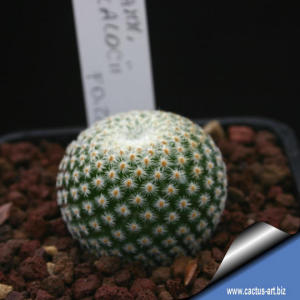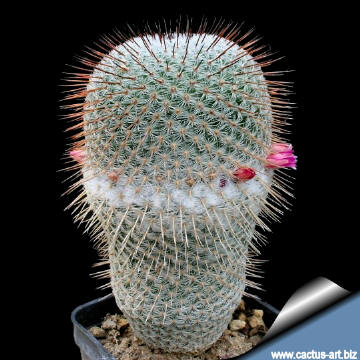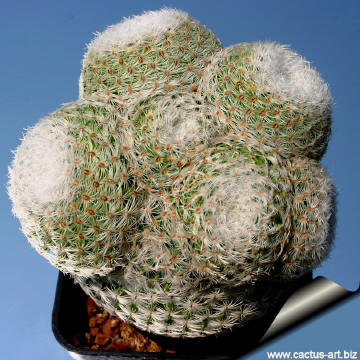-
x
Descrizione
M. tlalocii è una specie attraente che ripaga gli sforzi di coltivazione con le sue dense spine bianche. Family: Cactaceae (Cactus Family) Scientific name: Mammillaria tlalocii Reppenhagen 1989 Origin: Mexico, (at the border of the states of Puebla and Oaxaca). Habitat: Altitude 800 to 1.000 m. Conservation status: Listed in CITES appendix 2.
Description: Globular cactus, solitary or clumping dichotomously; usually this species don't produces lateral shoots. But in cultivation are frequently seen plant that branch profusely from the base. | |
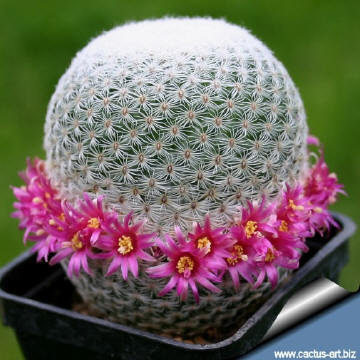 A very showy species with minute white spines and purple flowers. | 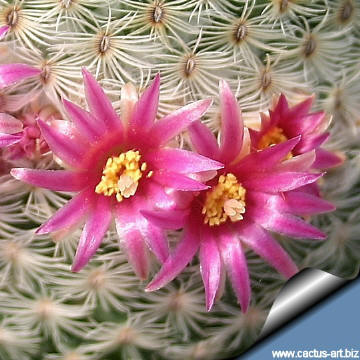 Forms rings of small carmine-pink flowers in spring. |
| Cultivation: It is a slow growing species . Use pot with good drainage and a very porous mineral-based potting mix, keep dry in winter. Pot plants are quite wet-sensitively. Care must be taken with watering (Rot prone) and needs good drainage. Water sparingly during the growing season, keep very dry in winter. Feed with a high potassium fertilizer in summer. | |

